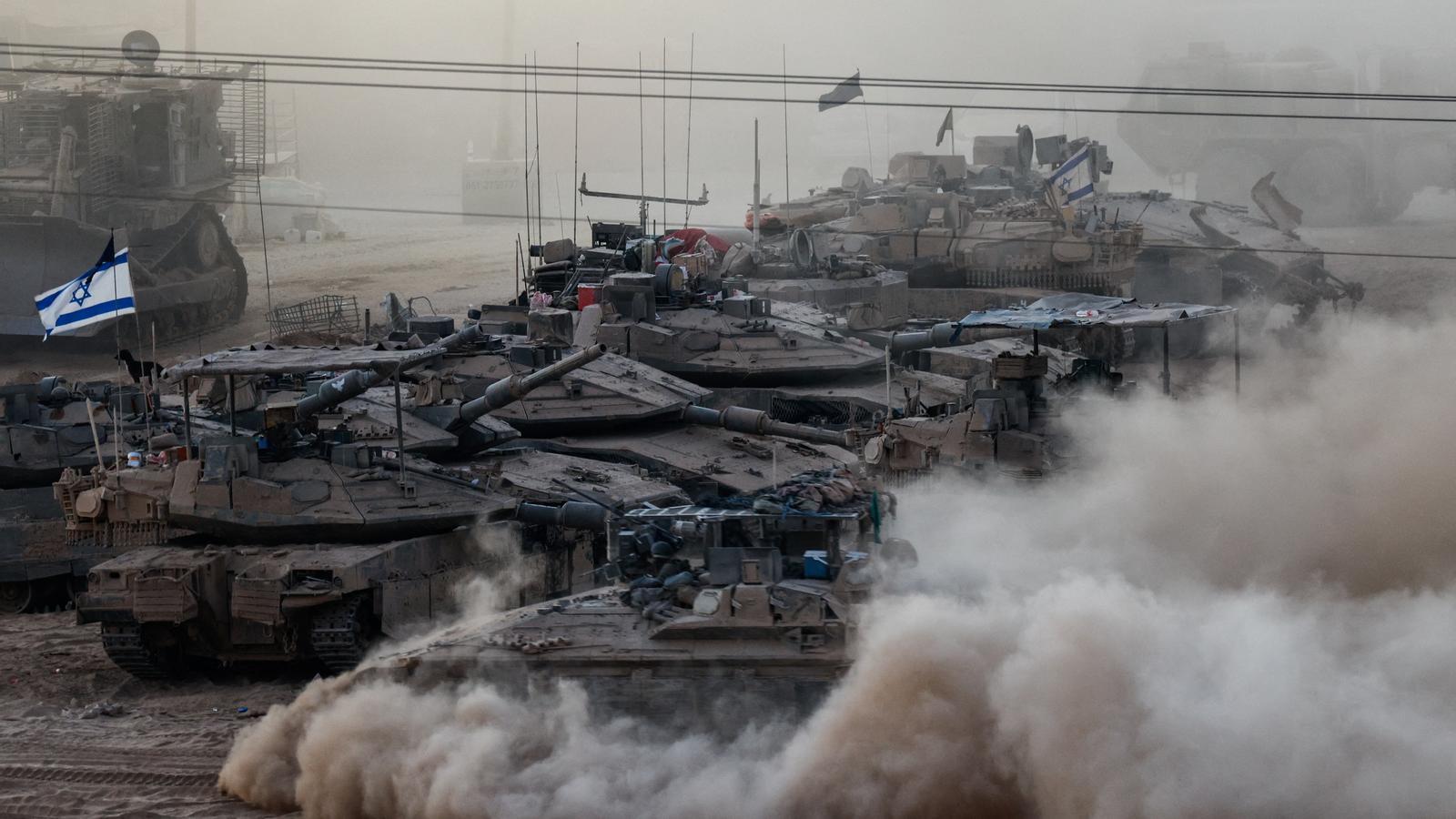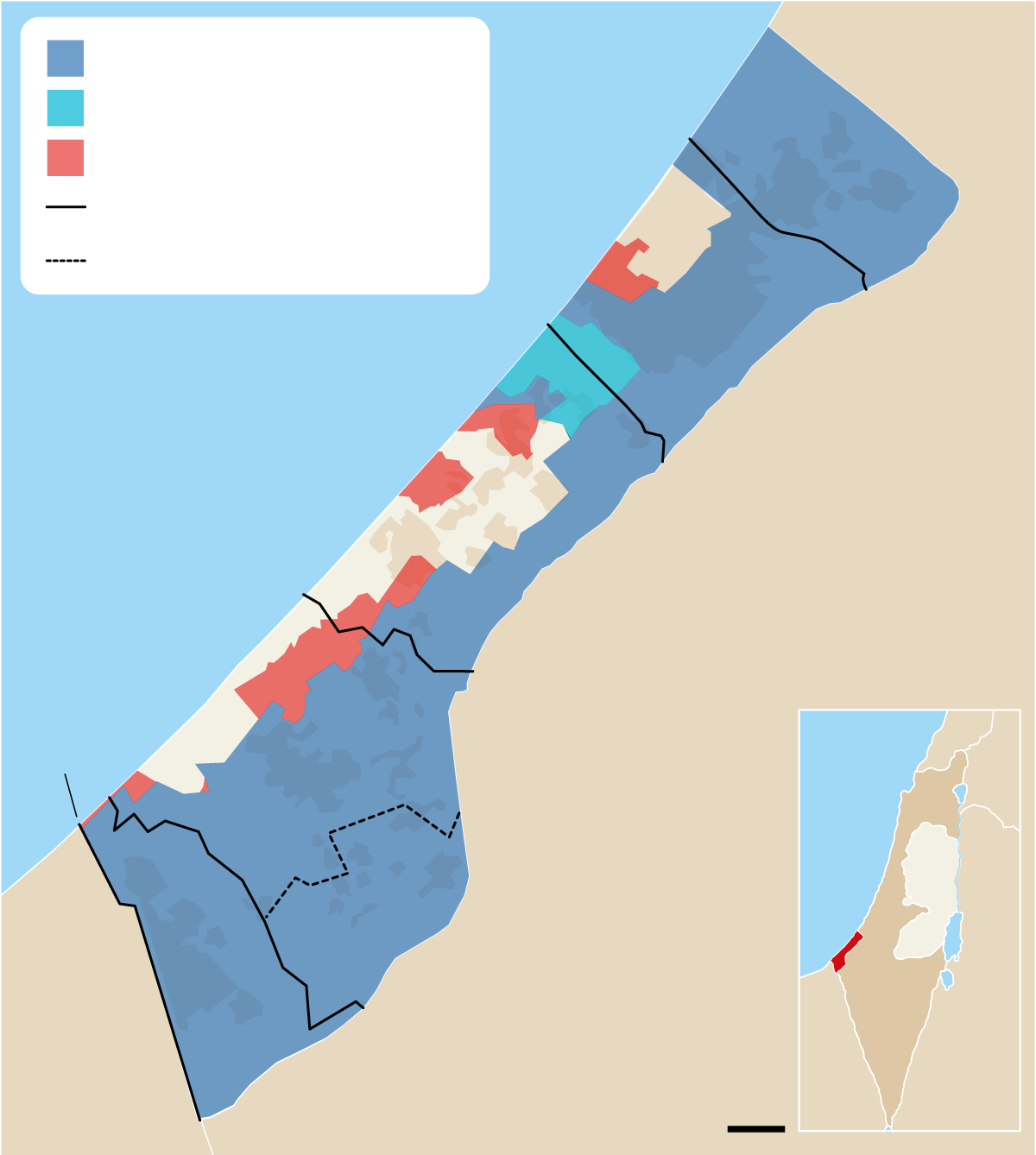Israel redraws Gaza with military corridors that isolate cities and concentrate the population.
The Israeli army has established six land axes that divide the Strip, reinforce the siege, complicate a truce and materialize the forced expulsion of population.


CairoIn a further step toward fragmenting Gaza, the Israeli army announced Wednesday that it had completed the construction of a new 15-kilometer corridor south of the territory in a previously designated security zone where residential buildings and farmland have been destroyed. Named Magen Oz, the land axis runs between the east and west of Khan Yunis, in the south of the Strip, and effectively divides a new city from the Strip, which has already been razed by Israel.
In a statement, the Israeli army stated that the corridor represents a "key" element in defeating Hamas in Khan Yunis. However, it is the last of six corridors it has established in Gaza since the start of the military offensive. This is doing so by dividing the territory into increasingly isolated areas, strengthening its military control, facilitating army movements and the forced concentration of the population, while also posing a major obstacle to the stalled ceasefire negotiations.
The first corridor Israel established in Gaza, a few months after the start of the military offensive, was the Netzarim corridor, which bisects the Strip from north to south. This axis, approximately 6 kilometers long and 4 kilometers wide, completely razed to make way for a road and military bases, is a no-go zone where the Israeli army frequently shoots to kill and which has allowed it to isolate northern Gaza after issuing movement orders to the area and preventing the return of civilization.
A few months after opening the Netzarim corridor, Israel occupied southern Gaza and gained control of the Philadelphia crossing along the border with Egypt. Measuring approximately 14 kilometers long and 100 meters wide, it is a key area because it allows Israel to close the siege around the Strip. Tel Aviv has claimed it wants to retain control because Hamas imports weapons through this route, but has so far provided no evidence of this smuggling route in recent times.
In March of this year, just a few weeks after Israel breaks the truce with Hamas, the Israeli army opened the Morag corridor, an axis about 12 kilometers long and at least 300 meters wide, parallel to that of Philadelphia, which isolates the largest city in southern Gaza, Rafah, from the rest of the Strip. Before establishing it, the Israeli army ordered the city's population to leave, so those who didn't are trapped.
"A Swiss cheese", ready to attack
Since late 2024, the Israeli army has also established the Mefalsim corridor, parallel to the Netzarim corridor, which isolates Gaza City in the far north of the Strip. A fifth, still incomplete but planned axis, called Kissufim, also parallel to the Netzarim corridor, separates the cities of Deir al-Balah and Khan Yunis. With the exception of Philadelphia, all the corridors have been named after former or current Israeli settlements in and around Gaza.
The establishment of these corridors is redrawing the geography of Gaza, following a logic similar to that of the occupied West Bank. In 2020, Palestinian Authority President Mahmoud Abbas referred to the fragmentation of the West Bank into isolated cities by Israeli-controlled territories with the metaphor of a broken "Swiss cheese." Currently, Israel directly controls more than half of Gaza and has declared nearly 70% of the territory a military or evacuated zone.
The Gaza Strip corridors serve various functions for the Israeli occupation forces. From a military perspective, these axes allow the army to expand its ground control inside the Strip with troops permanently stationed in these areas. This allows for all subsequent withdrawals.
Control of the corridors has also been repeatedly used by Israeli Prime Minister Benjamin Netanyahu to torpedo ceasefire negotiations. In the summer of 2024, they failed largely because of his insistence on maintaining a military presence in Netzarim and Philadelphia. During this year's talks on the second phase of the truce, the corridors again became a major stumbling block. And now Netanyahu has added Morag to the list of areas where he sees it as essential to maintain troops.Israel's initial war aims did not include any corridors.
Beyond the military advantage for the army, control of the corridors could also facilitate the Israeli government's plans to crowd the majority of Gaza's population into a large concentration camp in one of the areas where the territory is being fragmented. In recent weeks, in fact, Tel Aviv has already begun outlining plans to relocate the local population to the area between the Philadelphia and Morag corridors, on the rubble of what was once Rafah.



